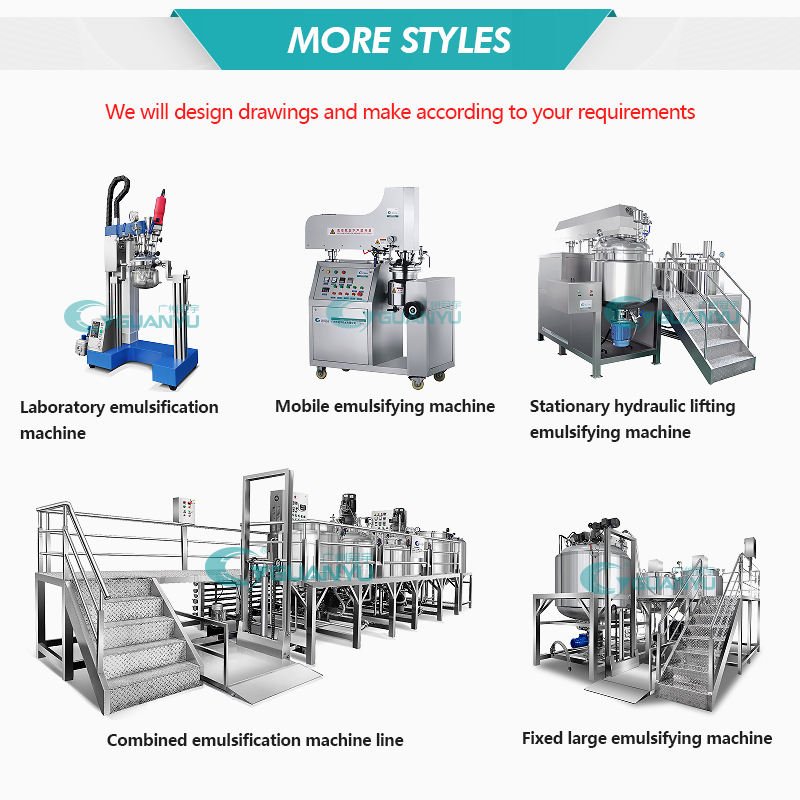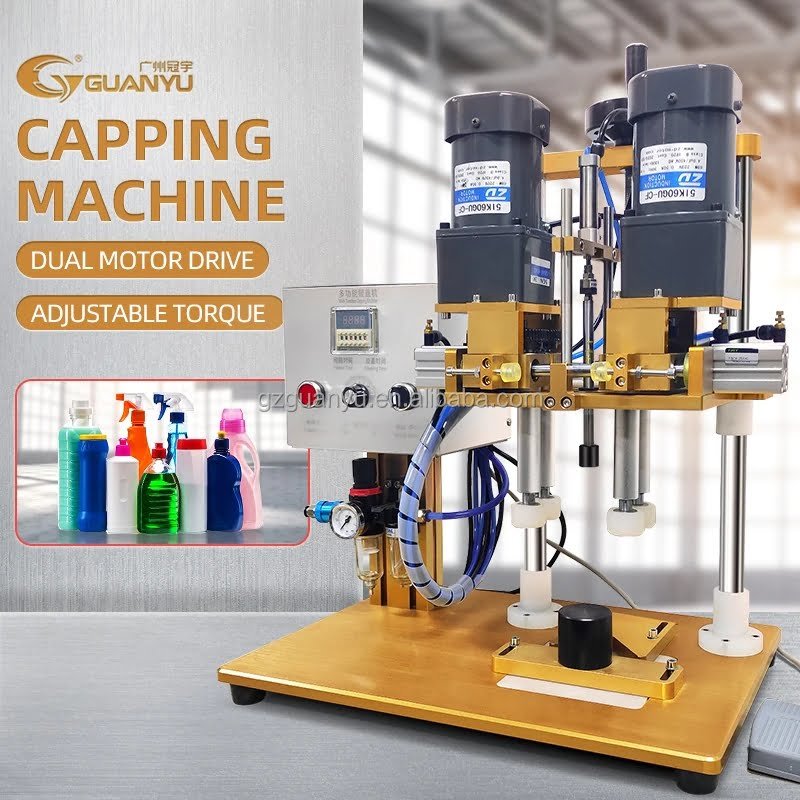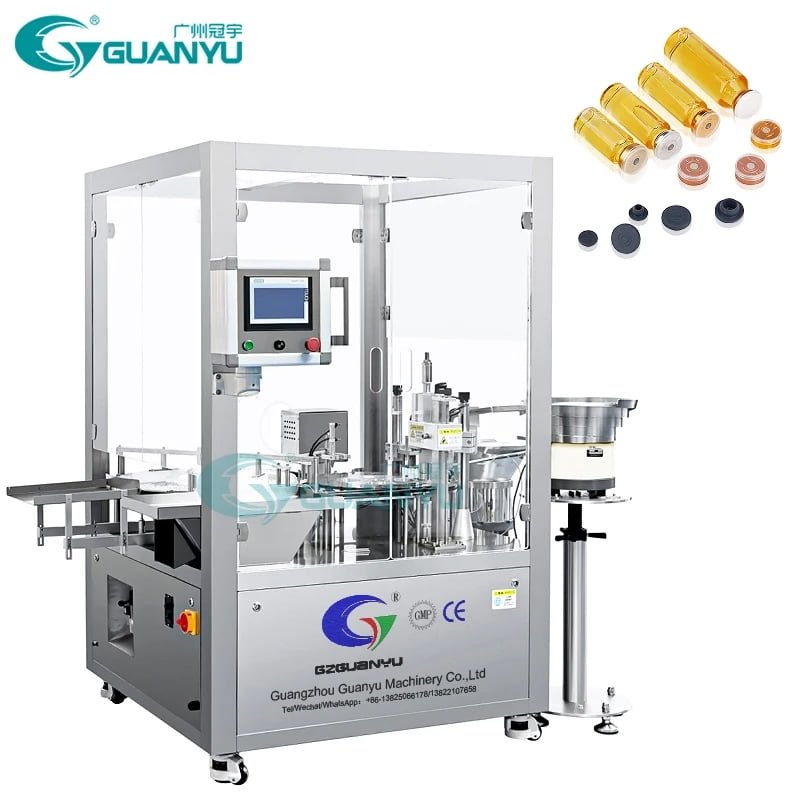美容行业是一个多方面且充满活力的行业,不断发展以满足消费者的需求和趋势. 该行业必不可少的众多工具和设备之一, 混合机是生产过程中的关键组成部分. 混合机, 也称为混合器或混合釜, 在保证质量方面发挥着关键作用, 一致性, 以及各种美容产品的功效. 本文探讨了混合机在美容行业的各种应用, 强调它们在化妆品制造中的重要性, 护肤品, 香水, 还有更多.
简介 混合机
混合机是设计用于混合的工业设备, 混合, 或均质化各种成分以形成均匀的产品. 这些机器有不同的尺寸和配置, 每个都适合特定类型的产品和生产规模. 在美容行业, 混合机用于混合原材料, 活性成分, 和其他添加剂来生产各种美容和个人护理产品.


混合机的类型
美容行业使用的混合机有多种类型, 每个服务于特定目的:
- 带式搅拌机: 这些机器使用螺旋带彻底混合成分. 它们是粉末混合的理想选择,通常用于生产干化妆品,例如粉饼和眼影.
- 行星搅拌机: 这些搅拌机有一个搅拌器,以行星运动方式围绕碗移动, 确保混合均匀. 它们通常用于厚, 粘稠产品,如面霜, 乳液, 和药膏.
- 高剪切混合机: 高剪切搅拌机用于乳化, 均质化, 并分散成分. 它们对于生产乳液至关重要, 例如保湿霜和防晒霜, 油相和水相需要混合均匀的地方.
- 真空乳化搅拌机: 这些混合器在真空条件下运行,以去除气泡并确保顺利进行, 高质量的产品. 它们通常用于生产高端护肤品和药品.
美容行业的关键应用
混合机是美容行业产品开发和制造各个阶段不可或缺的一部分. 以下是一些关键应用:
1. 化妆品制造
粉底等化妆品的生产, 眼影, 脸红, 口红严重依赖调配机. 这些产品需要精确混合颜料, 粘合剂, 填料, 和其他添加剂以达到所需的质地, 颜色, 和性能. 混合机确保成分均匀分布, 产生一致的高品质产品.
例如, 在粉底的生产中, 混合机将颜料与润肤剂混合, 稳定剂, 和防腐剂以创造光滑, 均匀的产品,可以很容易地涂抹在皮肤上. 相似地, 在眼影生产中, 螺带混合机用于混合细粉和颜料,以获得均匀的颜色和质地.
2. 护肤品生产
护肤品, 包括保湿霜, 血清, 清洁剂, 和面具, 需要仔细混合活性成分, 乳化剂, 和基地. 混合机在确保这些产品的稳定性方面发挥着至关重要的作用, 有效的, 并且使用起来很愉快.
在保湿霜的创造中, 例如, 高剪切混合器用于乳化油相和水相, 形成稳定的乳液,滋润和滋养肌肤. 用于精华液, 通常含有高浓度的活性成分, 行星式搅拌机确保成分均匀分布而不影响其效力.

3. 香水和香精调配
香水制作的艺术涉及各种芳香化合物的精确混合,以创造出独特而吸引人的香味. 混合机用于混合精油, 酒精, 和其他溶剂以获得一致的香味.
香水调配需要仔细控制混合过程,以确保最终产品具有均衡且持久的香味. 混合机通过确保不同的香调均匀分布和良好整合来帮助实现这一目标.
4. 药品和药妆品生产
在药妆品和药品的生产中, 混合机对于混合活性药物成分至关重要 (蜜蜂) 与赋形剂一起形成稳定有效的配方. 这些产品通常需要精确剂量和彻底混合以确保其治疗效果.
真空乳化搅拌机在这方面特别有价值, 因为它们可以生产出不含气泡的高质量乳液和凝胶, 确保产品光滑、均匀.
5. 批量和连续生产
混合机用于美容行业的批量和连续生产过程. 批量生产涉及以离散批次混合成分, 连续生产涉及材料在混合过程中的连续流动.
批量生产通常用于小规模或专业产品, 允许配方和生产的灵活性. 连续生产, 另一方面, 适合大规模制造, 为高需求产品提供效率和一致性.
混合机在质量控制中的重要性
质量控制在美容行业至关重要, 正如消费者所期望的安全, 有效的, 和高质量的产品. 混料机在保证产品质量方面发挥着至关重要的作用:
- 确保一致性: 混合机确保所有成分均匀分布, 产生统一的产品. 这种一致性对于产品性能和消费者满意度至关重要.
- 增强稳定性: 适当的混合有助于稳定乳液, 悬浮液, 和其他配方, 防止分离并确保产品在整个保质期内保持有效.
- 改善质地和一致性: 美容产品的质地和一致性对其可用性和吸引力至关重要. 混合机有助于实现所需的质地, 无论是柔滑的面霜, 丝滑精华液, 或细粉.
- 控制空气掺入: 真空乳化搅拌机在混合过程中去除气泡, 确保产品的顺利和高质量. 这对于面霜和凝胶等产品尤其重要, 气泡会影响质地和外观.

混合技术的进步
美容行业不断寻求创新和改进生产流程. 混合技术的进步带来了更高效、多功能的混合机, 提供众多好处:
- 自动化和控制: 现代混合机通常具有自动化控制和可编程设置, 允许精确控制混合参数,例如速度, 时间, 和温度. 这种自动化增强了一致性并降低了人为错误的风险.
- 可伸缩性: 混合机有各种尺寸可供选择, 从小型实验室规模装置到大型工业规模设备. 这种可扩展性使制造商能够有效地扩大生产以满足市场需求.
- 卫生设计: 卫生设计的进步确保混合机易于清洁和消毒, 降低污染风险. 这在美容行业尤为重要, 产品安全和卫生至关重要的地方.
- 能源效率: 现代混合机的设计注重节能, 降低运营成本并最大限度地减少对环境的影响. 节能设计也有助于可持续制造实践.
挑战和考虑因素
虽然混合机具有许多优点, 还有一些挑战和考虑因素需要牢记:
- 成分兼容性: 不同的成分可能具有不同的特性和兼容性, 需要仔细选择混合设备和参数以确保有效混合.
- 热敏度: 一些活性成分和配方可能对混合过程中产生的热量敏感. 具有温度控制功能的混合机可以帮助缓解这个问题.
- 清洁和维护: 定期清洁和维护混合机对于防止污染并确保性能稳定至关重要. 这需要适当的培训并遵守卫生规程.
- 监管合规性: 美容行业受到严格的监管要求. 制造商必须确保其混合工艺和设备符合相关法规和标准,以确保产品安全和质量.
结论
搅拌机是美容行业不可或缺的工具, 能够生产各种高品质的产品, 持续的, 和有效的产品. 从化妆品和护肤品到香水和药品, 这些机器在混合和均质成分方面发挥着关键作用, 确保最终产品满足消费者的期望和监管标准.
随着美容行业的不断发展, 混合技术的进步将进一步提高效率, 多功能性, 和生产过程的可持续性. 投资现代化的制造商, 高品质混合机将能够满足日益挑剔和充满活力的市场的需求.


感谢您的分享. 我读了你的很多博客文章, 凉爽的, 你的博客很好.